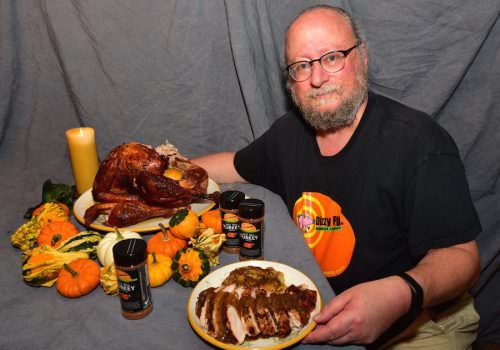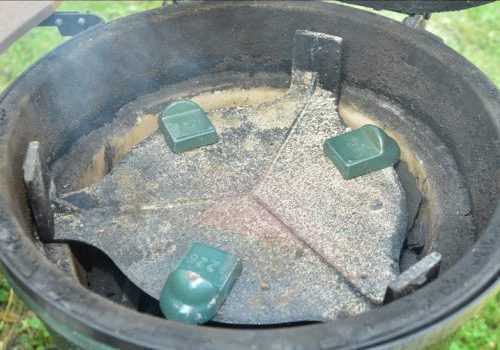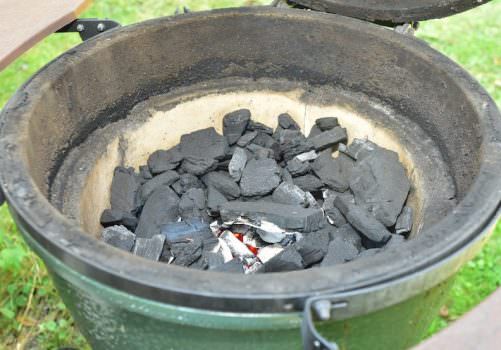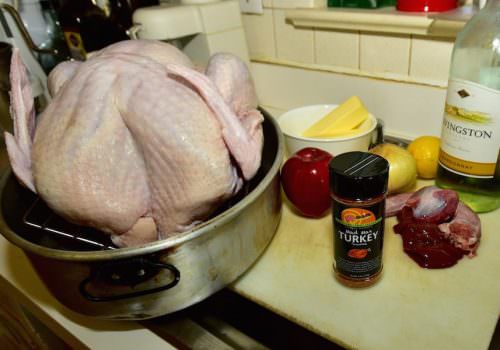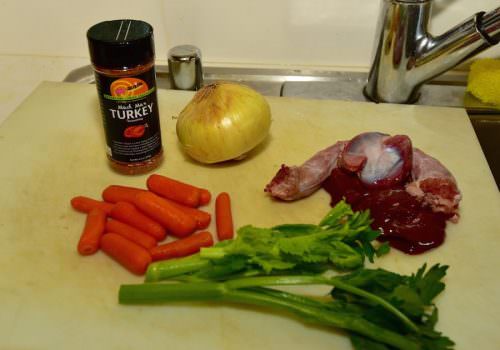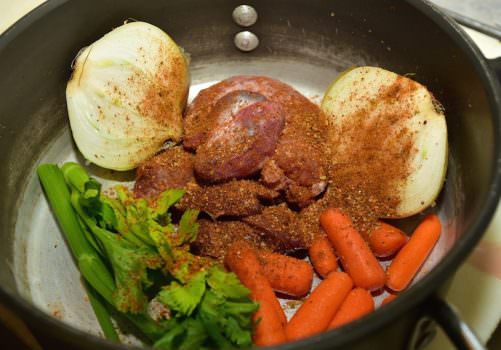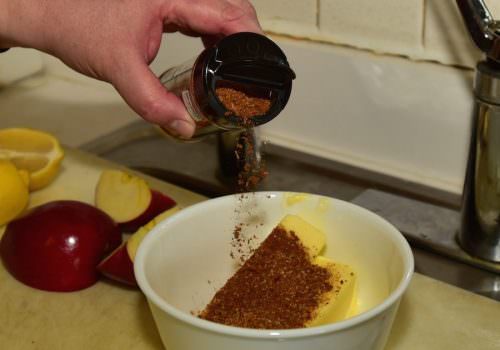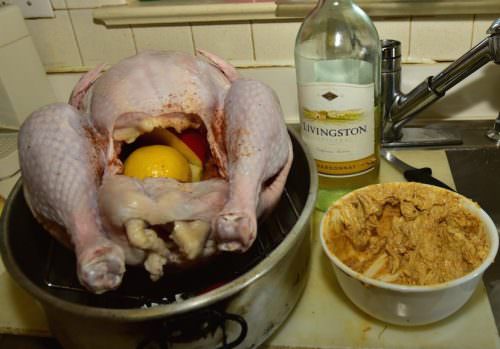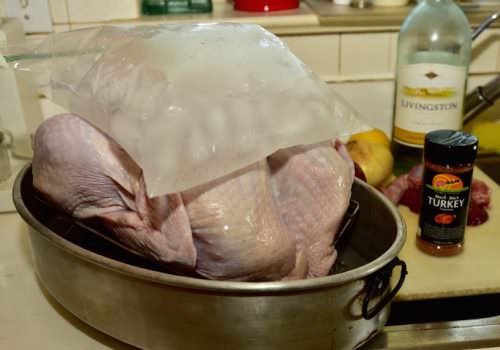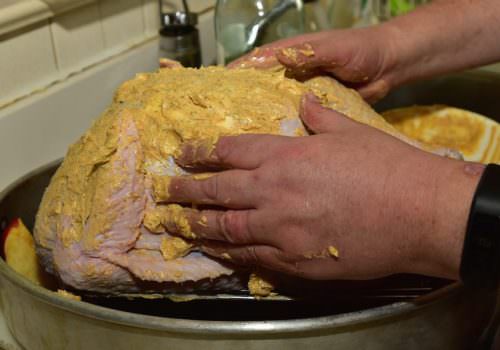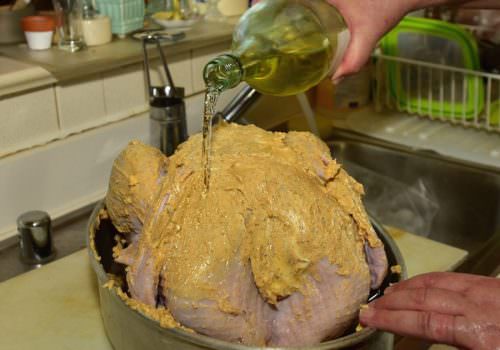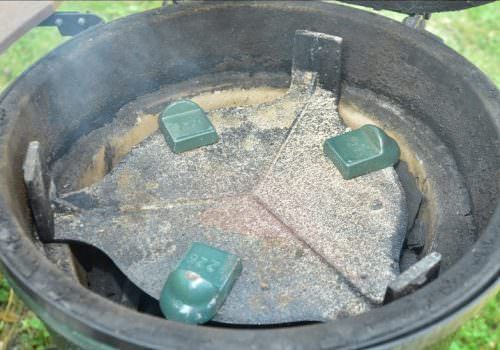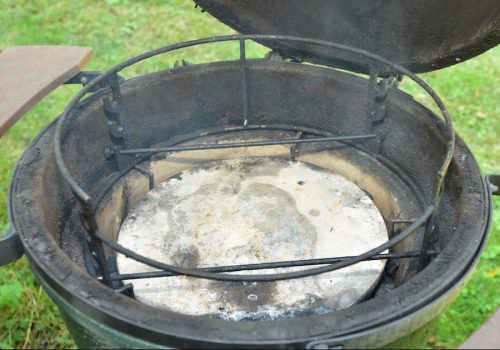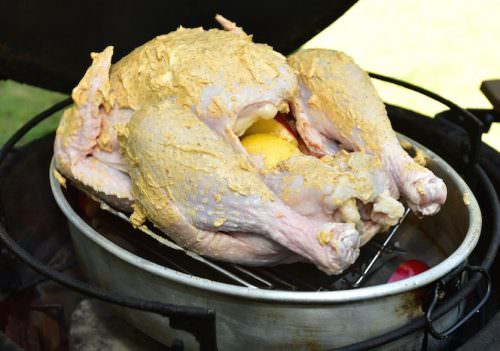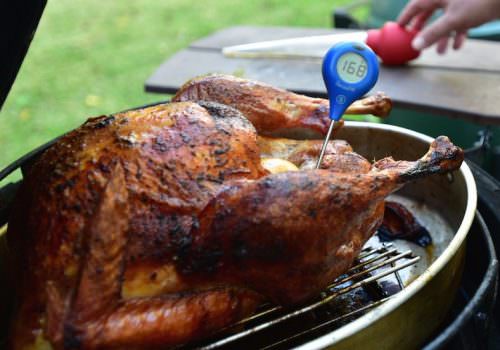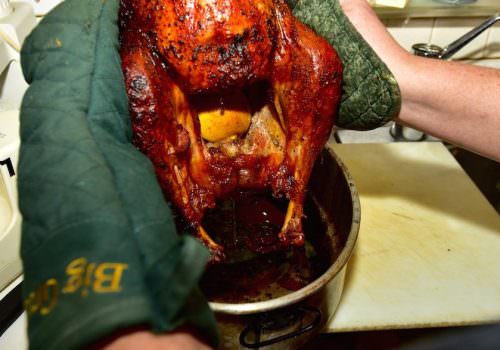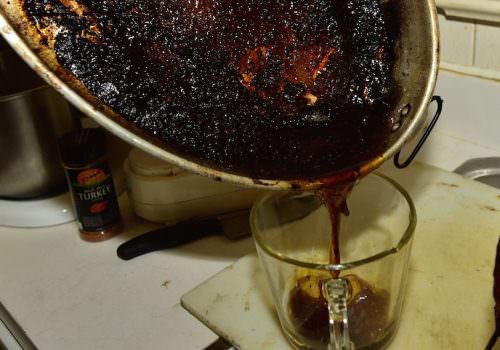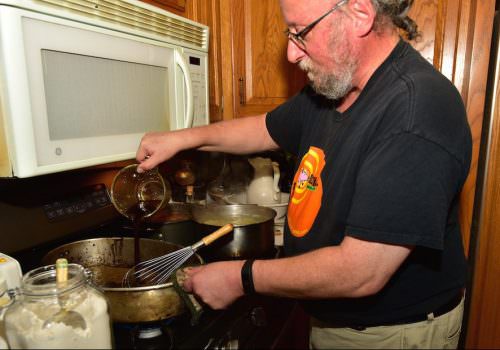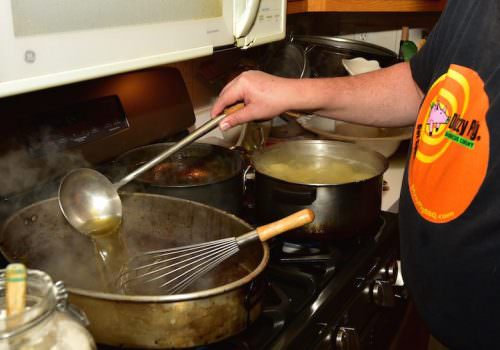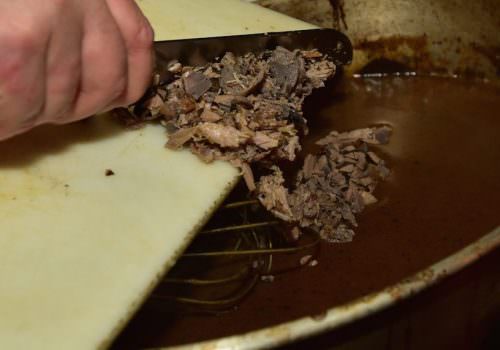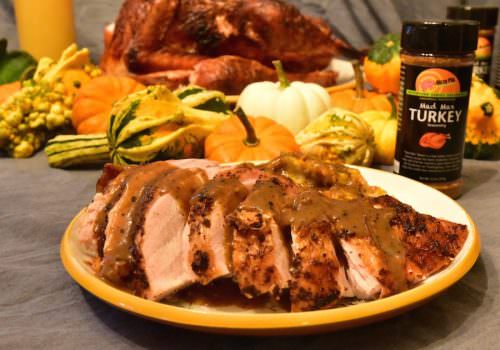I started roasting turkeys shortly after I got married in 1982. I initially learned how to roast them in a traditional manner from my mom and my wife’s Aunt Elsie. It was a great combination of old school European (mom) and southern country (Aunt Elsie). Over the years I stayed pretty true to tradition, but I spent a lot of time working to find the best way to achieve moist breast meat with fully cooked thighs.
When I started egging around 2000, I started the quest for the best possible roasted turkey on the Big Green Egg. I wanted to create that traditional roasted texture with just a hint of smoke flavor, not a smoked turkey. With the attributes of the moisture retention properties of the ceramic cooker, along with the rustic flavor of cooking over charcoal, I was able to achieve a great tasting, moist turkey.
Over the years I have continued to tweak the method, always striving for great flavor and moistness. Now with the advent of Mad Max Turkey Seasoning, we have taken the traditional holiday turkey to a whole new level. Myself, along with Chris Capell and the whole Dizzy Pig team, hope that you enjoy the results.
Ok, here’s how I do it, but first…
A couple of Disclaimers
- I don’t brine my turkey. As I’ve stated before, there is no particularly good reason for this other than I’m too lazy to do it, or I don’t think about it in advance. Plus, I’m not sure I could find the refrigerator space for the container it would take. However, this should have no impact on if you want to brine and still follow the rest of my method/recipe.
- While this method will usually result in fairly crisp skin, it is not my focus. However, it will look great as far as the final presentation.
The Egg set-up
Sometime before Thanksgiving, test out your setup. My first year I found that my roasting pan would not work with the grid on top of inverted plate setter, it was just too high into the dome. I ended up borrowing a rig from Chris Capell that consisted of two metal bars and a pie plate that fit under the grid in its normal place on the fire ring. I kept the pie plate filled with water all day so as to create a good indirect heat barrier from my roasting pan, thereby avoiding any scorching of my drippings (this is key to having the good drippings for gravy).
The next year I did a set up of inverted plate setter with the little green BGE ‘feet” on top, and the roasting pan on top of the feet. Key here is to have a heat barrier and sufficient air flow under your roasting pan to avoid any scorching in the pan. I have an 80 year old aluminum oval turkey roasting pan that fits perfectly in a large egg. This time of year, the grocery stores sell all kinds and sizes of metal pans. Figure out what you need to fit in the egg.
Other set ups that work include using a ‘spider’ with a pizza stone and then the grid, or the spider/pizza stone with an adjustable rig setting the roasting pan on the bars in their lowest setting.
Note, if you are roasting your turkey in the oven, simply put a rack in a low position and put your roasting pan on the rack.
The Fire
I set up as full a load of lump as I could (almost to the top of the fire ring, there was maybe a 1″ gap between the lump and the bottom of my plate setter). I added one good chunk of apple wood (other good woods are peach and pecan). I didn’t want a ‘smoked’ turkey. When it was done, the turkey had a nice hint of smoke. It’s your call as to how smokey you want yours to taste but remember, a turkey will absorb a lot of smoke, so take it easy. I got a good established fire going at 325°F. I let it burn for about 45 minutes prior to putting the turkey in. I found that a full load of lump at 325°F lasts only about 8 hours, so for a 20+ pound bird, it gets a little close.
The Cook
My turkey weighed in at around 14 pounds. At 325°F it took a good 4 hours to be done. During the cook I regularly basted it with a bulb baster (about once every 20 -30 minutes after the first hour). If using a water pan for a heat barrier regularly check the water pan underneath the roasting pan to insure it stays full of water. When the skin started browning, I tented it loosely with aluminum foil until about the last hour, when I removed the foil to let the skin crisp up and come up to the color I wanted (a nice deep golden brown). I didn’t check temps until the last hour or two. Even then, I pulled the turkey out when two things happened. First, when a deep poke in the thigh and breast resulted in clear juices running, and second, when the drumstick rotated freely at the joint (hey, this is how my mom and Aunt Elsie taught me to do it).
The Gravy
So, how do you make great gravy? Its really pretty easy, particularly at this point because you have created all the wonderful ingredients that you really need to do it. Take your pan with all the dripping in it. Note, that dark stuff you see is not burnt. It is well browned and will affect the final color of your gravy, but trust me, this is where all the real flavor is.
Note – depending on how dark the drippings end up being will determine how dark your gravy turns out. Sometimes its lighter, sometimes darker. It will be fantastic either way.
Here is the Mad Max Turkey Method
My goal is a turkey where the breast is done at the same time as the legs (more on that later), the meat has a great flavor, and there are drippings that will make for the best gravy you ever ate (after all, how many times have you had good turkey but crummy or pedestrian gravy?). And, when the gravy is really good, you will make a really memorable impression on your guests. This is a very traditional turkey that benefits from the magic of the egg. All of this in my most humble of opinions, of course.
Ingredients
Print RecipeTurkey Ingredients
- A Turkey (I like a fresh killed bird, but not necessarily a free range or heritage bird – they are expensive and I find them to be sinewy)***
- Dizzy Pig Mad Max Turkey Seasoning (Wonder Bird is also great)
- 1 bottle white wine (most any good white will do)
- 2 sticks butter, softened
- 2 onions, halved
- 2 apples, quartered
- 1 lemon, halved
- Some celery fronds
- Some carrots
Accessories
- Gallon zip-lock bags
- Ice cubes
- Roasting pan
- Stock pot (at least 4 quarts)
Gravy Ingredients
- Turkey drippings
- 2 stick butter
- 1/2 to 1 cup flour
- White wine, reserved from above
- Dizzy Pig Mad Max Turkey Seasoning
- Turkey neck, giblets, liver (from stockpot)
*** I typically start with a fresh killed bird from the grocery, not necessarily organic or free range, but one which hasn’t been frozen like a rock for a year.

